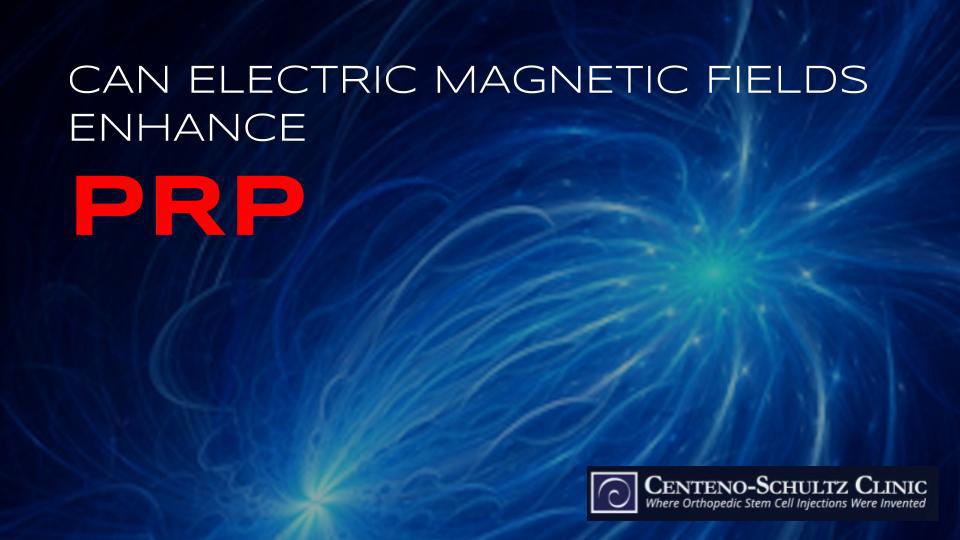If you think regenerative medicine and interventional orthopedics is the definition of advanced modern-day medicine, just wait. The trails are already being blazed to lead us through the next decade and beyond. The field of regenerative medicine is continuing to find ways to use patients’ own cells to affect their own healing, and it seems electromagnetic fields may be one possible new approach in the works that will enhance PRP treatments.
Electromagnetic Fields: The Good and the Bad
An electromagnetic field (EMF) involves the creation of force by using an electric and a magnetic field. You might be familiar with EMFs as they relate to power lines, for example. In this case EMFs have been associated with a negative impact on the health of those who live in close range to power lines and who are exposed to their high-frequency electromagnetic force for long periods of time. But EMFs aren’t all bad; in some cases, in fact, they can be quite beneficial. EMFs are used at a much lower frequency and for a very brief period of time in medicine to help both diagnose and treat certain diseases.
Magnetic resonance imaging (MRI) is another term you might be familiar with that involves EMFs as MRIs are a very common tool used in radiology to help physicians diagnose disease. an MRI can provide high-resolution images of a variety of internal body structures, which includes bones and even organs and tissues. One way EMFs are used in traditional medicine for treatment would be a radiofrequency ablation (RFA) procedure, which can be performed for a variety of issues, such as to treat tumors to attempt to decrease their size, and even to treat heart conditions that disrupt rhythm (e.g. atrial fibrillation). Another way you might see RFA used is to ablate (destroy) nerves that are painful; destroying nerves, however, is not something we recommend, especially when there are platelet-based treatments, such as healing growth factors, for nerves that don’t involve nerve damage or destruction.
One recent study suggests yet another way that EMFs may be beneficial, and this time it’s in the area of regenerative medicine: wound treatment, interestingly, involving platelets. Let’s review.
Growth Factor Release Customized Using EMFs
First, it’s important to understand platelet-rich plasma (PRP) and how it’s created. PRP is created when the whole blood is concentrated to isolate the platelets. Our platelets are tiny cell fragments that circulate in our blood. They contain beneficial growth factors that help the blood to clot, for example, when we cut a finger. This begins the healing process.
The recent study used a pulsed electric field (PEF) to study the effect of EMFs on PRP. They found that these EMFs were able to change the release of the growth factors from the platelets. What does this mean exactly? Different types of growth factors are responsible for different functions. So it could mean that growth factor profiles could be generated that may adjust to various stages of wound healing. For example, in the future when your physician performs a PRP injection, he or she may be able to apply EMFs from a machine to the affected area and simply set the dial to cartilage repair or tendon tissue or blood vessel formation.
We’ve Already Used Similar Techniques
At our licensed Regenexx site in Grand Cayman, we’ve already used a similar process. It involves a natural chemical modification of the platelet growth factor release. To treat disc bulges in the low back, for example, we can take the patient’s platelets and prompt them to preferentially release a growth factor called VEGF that helps new blood vessels grow. Why would this be necessary? Poor supply of blood to the part of the disc that is requiring treatment.
It seems with breakneck speed of technology today, what seemed like science-fiction just a decade ago is becoming less and less fiction and more and more science. The regenerative medicine of the future will certainly involve being able to modify our own cells, specifically in releasing those beneficial growth factors to enhance healing. What will regenerative medicine look like in the year 2030? We’ll have to wait and see, but in 2030 when we look back to the year 2019, the advanced, state-of-the-art techniques we’re using today are likely to look rather antiquated.
